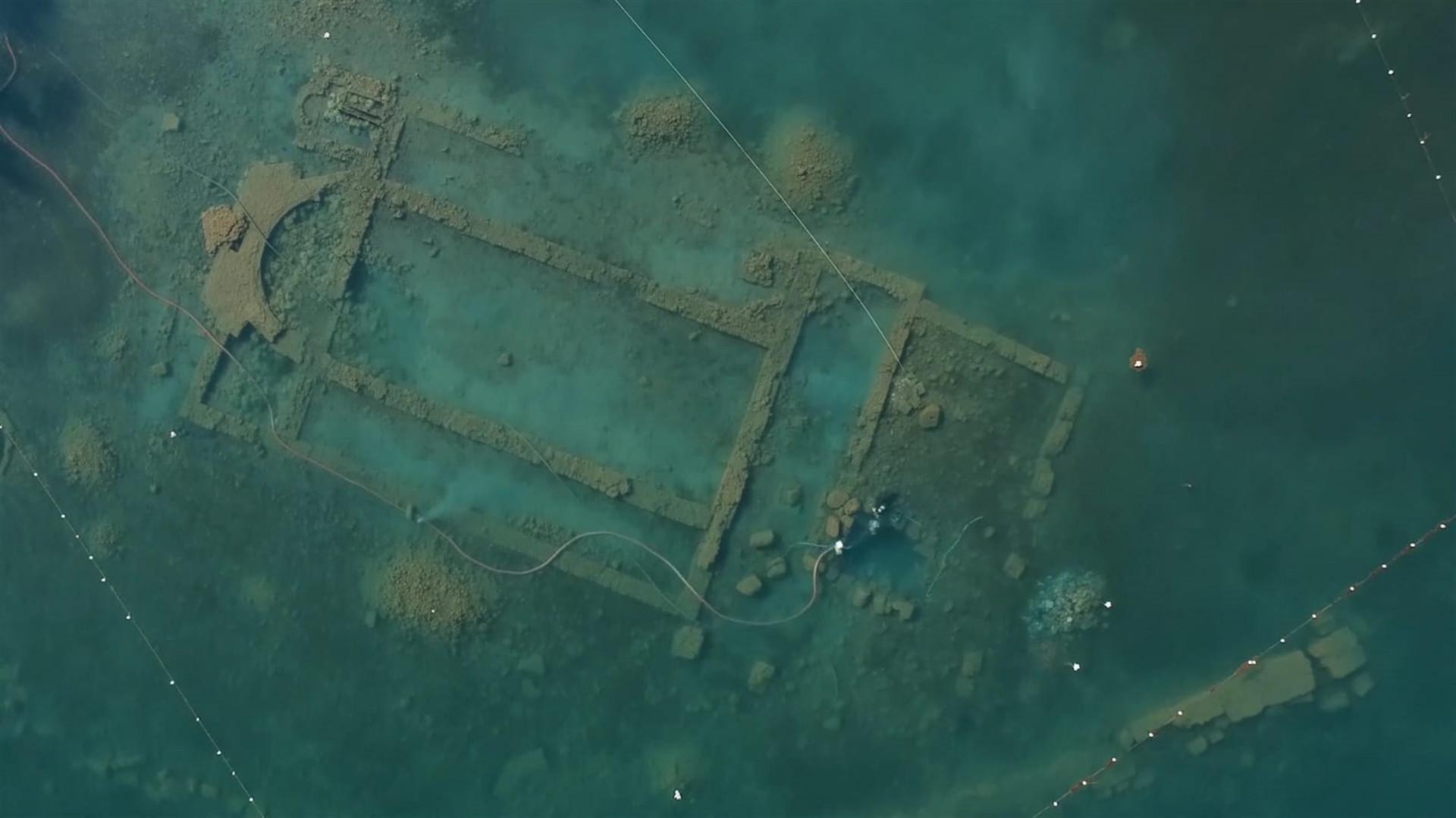
Underwater archaeological research has been continuing in the ancient basilica, which was discovered 20 meters off the İznik Lake in the northwestern province of Bursa’s İznik district in 2014. The basilica is located at a depth of 1.5-2 meters.
The archeological works in the basilica, which was also selected as one of the 10 most important discoveries worldwide in 2014 by the Archeology Journal published by the American Archeology Institute, have been recently photographed.
Professor Mustafa Şahin, the scientific advisor of the excavations from Bursa Uludağ University (BUÜ), has said that there was a building complex underwater dating back to the second century.
According to the data obtained from the ongoing studies, it is reported that the “Temple of Apollo,” the “Neophytos Martyrium” and the” Neophytos Basilica Church” were located together in the area where the research is being carried out. It is still being investigated if the hall, where the “First İznik Council” was held, is there or not.
Stating that the basilica, which was built at the end of the fourth century, is the most significant part of the building complex, Şahin said: “The complex reached the present days with its architecture and foundation ruins. However, we see that there are other structures under it.”
Noting that the research has been continuing to find out to whom the religious structure in the basilica belonged, Şahin said, “The church built in the fourth century in the name of Saint Neophytos, who was killed at the age of 15, must be the building that we excavated.”
Stating that İznik is a prominent center for Christians, he said: “The most important reason for this is that the First Council and Seventh Council gathered here. The location of the First Council is unknown.”
“There have been speculations about a senate palace, but as far as we know, no emperor has ever lived here. Therefore, there is no possibility of having a palace structure in İznik,” he added.
“The First Council was depicted in the drawings on the walls of the Vatican Sistine Chapel. The meeting place in this picture is outside the city wall, by the lake. Considering the location of the underwater basilica, the First Council may have been held in a hall here. We are trying to find an answer to this,” he said, adding that if they could find the building where the First Council gathered, it would offer İznik with an opportunity in terms of tourism.
Stating that a three-phase order may be in question in the basilica, Şahin said, “At the bottom is the Temple of Apollo, and next to it is the Neophytos Martyrium and the Neophytos Basilica Church in the last phase. While Christianity became the official religion with the decree of the Eastern Roman Emperor Theodosius in 394, the use of all structures of the Pagan religion was prohibited. The ruins we found under the lake show that the building was built after 390.”
Stating that Turkey’s most important underwater excavations have been carried out in the İznik Lake, Şahin said: “I want to work with graduate and doctoral students in the excavations. The reason for this is to train experts who can conduct research in our inland waters in the future and to establish an underwater research center on inland waters.”
“When I started excavations here, we saw that there were similar building remains at several points. In order to prevent such areas from being damaged, we made applications to the Bursa Cultural Heritage Conservation Regional Board and have these areas under protection,” he added.